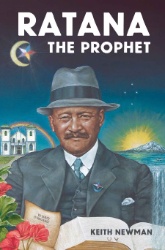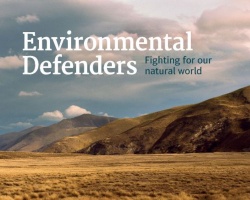The New Zealand Institute Of Forestry Urges Action Over Impending Summer Fire Risks
The upsurgence of global wildfire events is an early warning for potential large-scale fires in New Zealand forests and rural landscapes this upcoming summer season, says the New Zealand Institute of Forestry (NZIF).
NZIF president, James Treadwell, is calling for better coordination and management of these fire risks, saying there is an urgent need to prioritise at-risk land management issues over deployment of firefighting aircrafts and building of more fire trucks.
Fire risks specific to New Zealand are the vast areas covered by self-sown exotics or retired hill and high-country tussock grasslands, which were historically burned every seven to ten years by lease-holding farmers.
“The ceasing of these practices has resulted in an accumulation of fuel across the hill and high-country landscape throughout the country,” Treadwell says.
Previously, much of this landscape had lower fuel loadings, enabling swift containment of unwanted fires. This is no longer the case. Wildfires destroyed 5,043 hectares of self-sown exotics and tussock at Lake Ohau and 2,230 hectares at Pukaki Downs in 2020; and consumed 5,088 hectares of tussock grassland at Deep Stream in 2019.
The shift from a La Niña to an El Niño weather pattern across New Zealand this summer is anticipated to significantly elevate fire danger levels, particularly in the East Coast, and could compound the wildfire risk.
“Landscapes and rural communities in the South are at particular risk of fire due to the incoming El Niño weather patterns, unless appropriate mitigation activities are undertaken,” Treadwell says.
The NZIF strongly urges Fire and Emergency New Zealand (FENZ) to collaborate more closely with landowners and forestry professionals to promote and ensure better management and support in reducing fuel loadings in the hill and high-country environment, to raise fire prevention awareness and preparedness and to develop tighter protocols for prevention and avoidance of fires in the rural environment including power line maintenance and automatic cutouts, and restrictions on high fire risk activities during times of high fire danger.
“Specifically, NZIF would like to see focus directed towards reducing fuel loadings on areas covered in self-sown exotics and controlled fuel reduction burning on Public Crown lands.
“A comprehensive training program, to ensure there is a sufficient resource of rural forest firefighters who can safely operate in tall timber, hill and high-country environments, is also sorely needed,” Treadwell says.
“Such a program would reduce reliance on urban community-based volunteer firefighters and the excessive deployment of aircraft to contain landscape fires.”
A centralised fire service entity for urban fire protection and fire management in the forest and rural landscape was established in 2017. However, James Treadwell says the fire response-driven culture within FENZ isn’t what’s needed to address the present risks, rather a proactive approach towards land management and preventative practices, is what’s needed.
Failure to take corrective action to protect New Zealand’s forest and rural landscapes may lead to repeated forest losses as witnessed from past wildfires – akin to the wildfires we are currently observing in Greece.
The NZIF wants to stress the importance of learning from history to avoid devastating consequences to our whenua. Collectively, we need to front foot these fire risks through collaboration, education and proactive management.
“If immediate steps are not taken to consider land management measures, such as fuel load reduction and firebreaks (including green firebreaks); and the intensification of a fire training program, we risk leaving a detrimental legacy for the generations of land managers and foresters who follow” Treadwell says.


 Keith Newman: Revised Edition Of Ratana Biography Highlights Lasting Legacy
Keith Newman: Revised Edition Of Ratana Biography Highlights Lasting Legacy Environmental Defence Society: Groundhog Day, New Book Shows History Is Repeating Itself
Environmental Defence Society: Groundhog Day, New Book Shows History Is Repeating Itself NZEI Te Riu Roa: Mandated Single Approach To Reading Will Not Work
NZEI Te Riu Roa: Mandated Single Approach To Reading Will Not Work The Conversation: Could The School Phone Ban Work?
The Conversation: Could The School Phone Ban Work? Public Health Communication Centre: To Avoid A Measles Epidemic, Aotearoa Must Close The ‘Immunity Gap’
Public Health Communication Centre: To Avoid A Measles Epidemic, Aotearoa Must Close The ‘Immunity Gap’ Heritage New Zealand: Kid-friendly Archaeology Resource Kit Launched As Part Of Archaeology Week
Heritage New Zealand: Kid-friendly Archaeology Resource Kit Launched As Part Of Archaeology Week